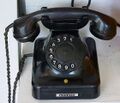Template:Selected anniversaries/February 14: Difference between revisions
No edit summary |
No edit summary |
||
| Line 14: | Line 14: | ||
||1744 – John Hadley, English mathematician, invented the octant (b. 1682) | ||1744 – John Hadley, English mathematician, invented the octant (b. 1682) | ||
||1779 – James Cook, English captain, cartographer, and explorer (b. 1728) | ||1779 – James Cook, English captain, cartographer, and explorer (b. 1728) killed by Native Hawaiians near Kealakekua on the Island of Hawaii. | ||
||1819 – Christopher Latham Sholes, American journalist and politician, invented the typewriter (d. 1890) Christopher Latham Sholes (February 14, 1819 – February 17, 1890) was an American inventor who invented the QWERTY keyboard, and along with Frank Haven Hall, Samuel W. Soule, Carlos Glidden and John Pratt, has been contended as one of the inventors of the first typewriter in the United States. | ||1819 – Christopher Latham Sholes, American journalist and politician, invented the typewriter (d. 1890) Christopher Latham Sholes (February 14, 1819 – February 17, 1890) was an American inventor who invented the QWERTY keyboard, and along with Frank Haven Hall, Samuel W. Soule, Carlos Glidden and John Pratt, has been contended as one of the inventors of the first typewriter in the United States. | ||
| Line 40: | Line 39: | ||
||Edmund Georg Hermann Landau (b. 14 February 1877) was a German born mathematician who worked in the fields of number theory and complex analysis. | ||Edmund Georg Hermann Landau (b. 14 February 1877) was a German born mathematician who worked in the fields of number theory and complex analysis. | ||
||Greenleaf Whittier Pickard (b. February 14, 1877) was a United States radio pioneer. He was responsible for the development of the crystal detector, (cat's whisker detector), a radio wave detector which was the central component in early radio receivers called crystal radios. He also experimented with antennas, radio wave propagation, and noise suppression. Pic. | |||
||1878 – Julius Nieuwland, Belgian priest, chemist and academic (d. 1936) | ||1878 – Julius Nieuwland, Belgian priest, chemist and academic (d. 1936) | ||
Revision as of 08:53, 18 February 2018
1855: Texas is linked by telegraph to the rest of the United States, with the completion of a connection between New Orleans and Marshall, Texas.
1876: Alexander Graham Bell applies for a patent for the telephone, as does Elisha Gray.
1904: Engineer and inventor Charles William Oatley born. He will develop of one of the first commercial scanning electron microscopes.
1943: Mathematician David Hilbert dies. He discovered and developed a broad range of fundamental ideas in many areas, including invariant theory and the axiomatization of geometry.
1944: Physicist and academic Owen Willans Richardson uses thermionic theory to compute optimal Valentine's Day card.
1950: Physicist and engineer Karl Guthe Jansky dies. He was one of the founding figures of radio astronomy.
1951: Theoretical physicist and crime-fighter Richard Feynman uses principles of quantum electrodynamics to compose state-of-the-art Valentine's Day cards.
1990: The Voyager 1 spacecraft takes the photograph of planet Earth later become famous as Pale Blue Dot.
2017: Steganographic analysis of famed illustration Alice and Niles Dancing reveals three terabytes of love letters between mathematicians Alice Beta and Niles Cartouchian.








